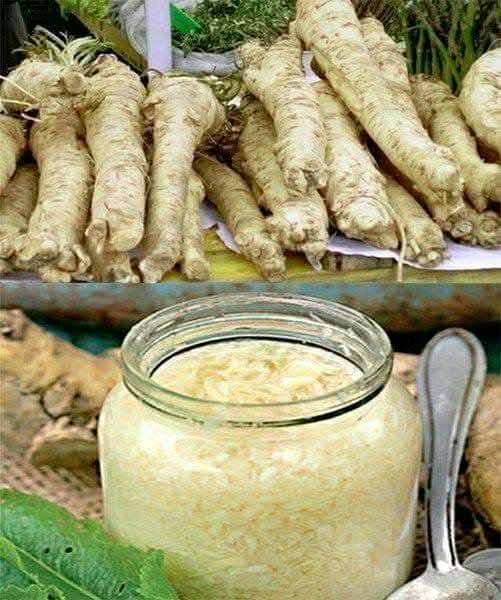ADVERTISEMENT
3,500 years ago, the Egyptians ate horseradish. The Greeks considered it a cure for all ills and believed its weight deserved to be paid for in gold, and the Jews considered it one of the plants that recall the biblical moment of the Flight from Egypt.
Native to the Mediterranean basin, horseradish spread to Europe and Asia during the Renaissance. Horseradish is a root valued for its spicy aroma, which is used both as a fresh food and as a medicinal product in the form of a tincture and syrup.
Characteristics and Benefits
It normalizes blood pressure.
Certain substances contained in horseradish have a positive effect on blood circulation in peripheral areas.
Thus, horseradish consumption normalizes blood pressure and prevents the risk of blood clots.
At the same time, the sulfur-containing ingredients in horseradish improve the elasticity of the brain and coronary arteries, thus reducing the risk of heart attack or stroke.
It calms coughs.
Horseradish decongests the airways and is therefore recommended for the treatment of asthma. In case of a coughing fit, swallow a teaspoon of grated horseradish mixed with sugar and leave in a warm place for half a day.
The treatment should not last more than a month, as horseradish is irritating in large quantities.
Natural pain reliever.
Horseradish is also recommended for colds and the flu. At the first signs of symptoms, it's a good idea to eat horseradish in a salad, alongside a steak, or even fresh, and the feeling of nasal congestion will disappear.
Horseradish is also a very good remedy for headaches, as it is a real pain reliever. In this case, you can apply it to the forehead as a compress.
Continued on the next page
ADVERTISEMENT
